Last Updated on 27 August 2024 by Cycloscope
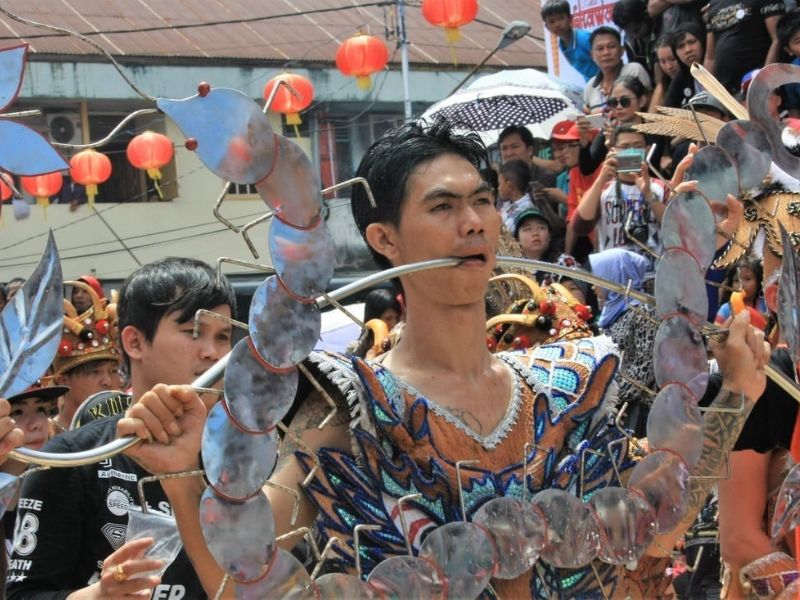
Cap Go Meh (also spelled Chap Go Mei, Chap Go Meh)
The traditional Chinese Lantern Festival of Singkawang
Kalimantan, Borneo, Indonesia
Singkawang, Kalimantan, Borneo, Indonesia. The fifteenth day of the Chinese New Year is approaching, it will conclude the celebrations for the new year.
And here, in this Taoist Chinese majority town, it is still alive an ancient tradition. The streets must be metaphysically cleaned to be ready to welcome the new year. On the fourteenth day of the Chinese New Year, believers go to pray in all the temples of the city and surroundings.
The Chinese settled here more than three hundred years ago, as miners and traders, and had become Indonesian citizens for generations. Singkawang is nicknamed the “city of a thousand temples” and has a thousand temples, large, small, and microscopic.
On the fifteenth day, the Tatung, as they are called in Indonesia, are possessed by spirits. Falling into a trance, they sit on sharp blades and pierce their faces with various tools.
Day 1 – prayers or riots?
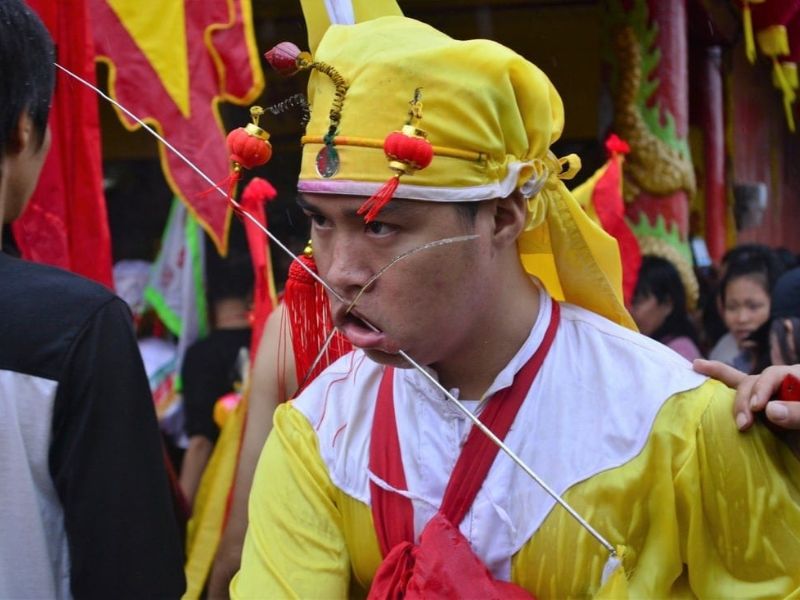
It’s the morning of February 21, and should now begin the Cap Go Meh (正月 半 Jang Ngiet Ban in Hakka), it should just be a day of prayer and there should be no performance today.
But already at 6 am at the main temple of the city, a van arrives. A father, his son, and a group of musicians, who play always the same rhythm with gongs and drums, to maintain the trance state of the Tatung.
A chair with sharp blades is placed in front of the entrance to the temple, the father enters dancing and goes to pray at the altar, still dancing. Then he goes out and jumps on the swords. So does his son, who seems still inexperienced and suffering.
Then come two more vans, one carrying the musicians and a portable shrine. It’s the main Taoist goddess, Xi Wangmu, the Queen Mother of the West. They’re taking it in procession to all the other temples.
They invite us to get in the van with them, give us red hats and we go. We are the only foreigners at this event. This is the street cleansing ceremony. We ask when and where will be the ceremony of possession, and they say tomorrow but do not know exactly.
The protest
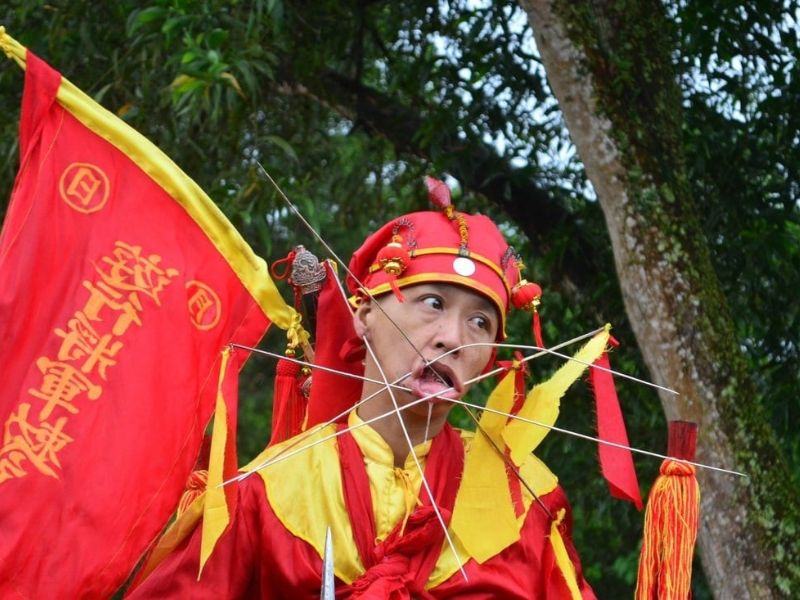
We quickly realize that there is great movement around. It doesn’t seem to be just private prayers, as they told us. It all looks very organized. After a few hours of visiting temples, we arrive in a countryside sanctuary filled with Tatung. There’s a guy with 4 or 5 piercings on his face. We are unwittingly in the middle of a protest. The Indonesian government is anxious to make this tradition into a carnival for tourists.
In town, they are setting up the stands for the paying audience and the platform for the VIPs and the rulers of Singkawang, who are strangely Muslims (while the wide majority of the citizens are Chinese). Our contact tells us that last year the Tatung, already possessed, sitting on the swords and with piercings stuck in their faces, had to wait until the end of the Mayor’s speech, and various politicians jabber for two hours.
When the parade finally began it started to rain, the audience was gone and the Tatungs were now no longer possessed, out of the state of trance. This is particularly dangerous because coming out of the possession the Tatung begins to feel the pain and when piercings are extracted blood spills.
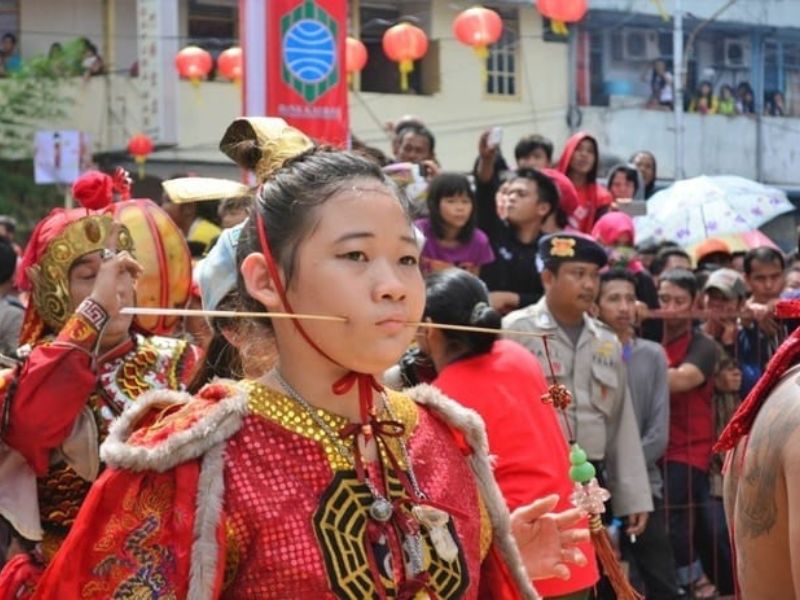
What’s worse, to create the carnival, the government decided to pay 1,000,000 rupiahs, 67€, every Tatung. The risk is that for some little money, even those who have never done it before may try, risking their lives. The Tatung begin this practice as children, they usually belong to the same family.
We get back to the main temple where all the Tatung are arriving, they come, and they pray. Watching them closely is clear that their conscience is not in this world. There are only 4 or 5 policemen outside, in a state of bewilderment and concern. The ceremony was supposed to be tomorrow, and no one expected this demonstration, which in summary means “this is our tradition, it is a religious ceremony and politics needs to stay out.”
The brotherhood between Dayak and Chinese Hakka
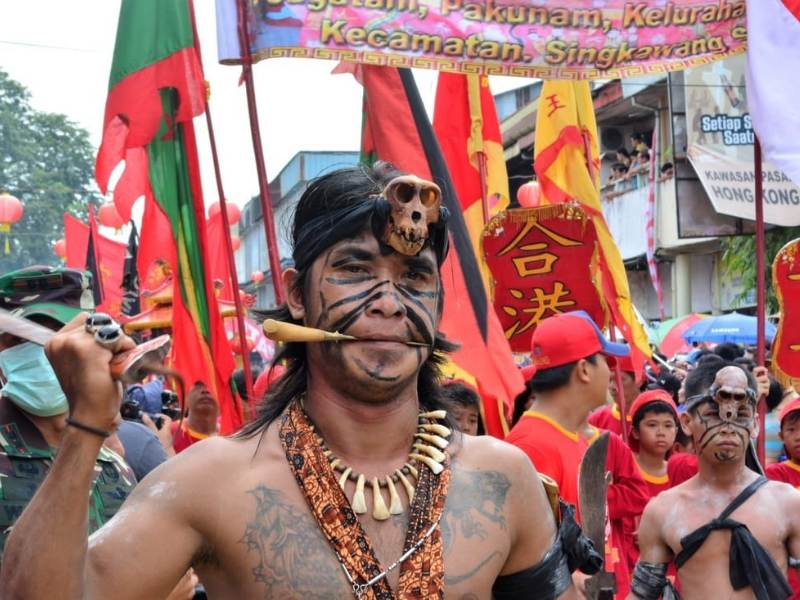
Around midday, the Dayak, the natives of Borneo, come to the temple. This shouldn’t be their festival, their Gods do not inhabit the Taoist temples. But the relationship between the Chinese and Dayak is so strong here that they decided to celebrate together. The Dayak come to pray in the Taoist temple as a sign of respect and some of them are Tatung.
We are told that under President Suharto, the Indonesian dictator from 1967 to 1998, Dayak and the Chinese were mass killed by the government who tricked them both into blaming Dayak for the Chinese killings and the Chinese for the massacre of Dayak. Divide et impera.
This generated a war between the two groups, and many died. When they realized that it was the work of the dictatorship, they promised each other eternal mutual protection, renewing an alliance more than a century old. A few years ago the Muslim administration wanted to eliminate a dragon statue, very dear to the Chinese. The Dayak came from the forest armed with machetes. The statue is still in place.
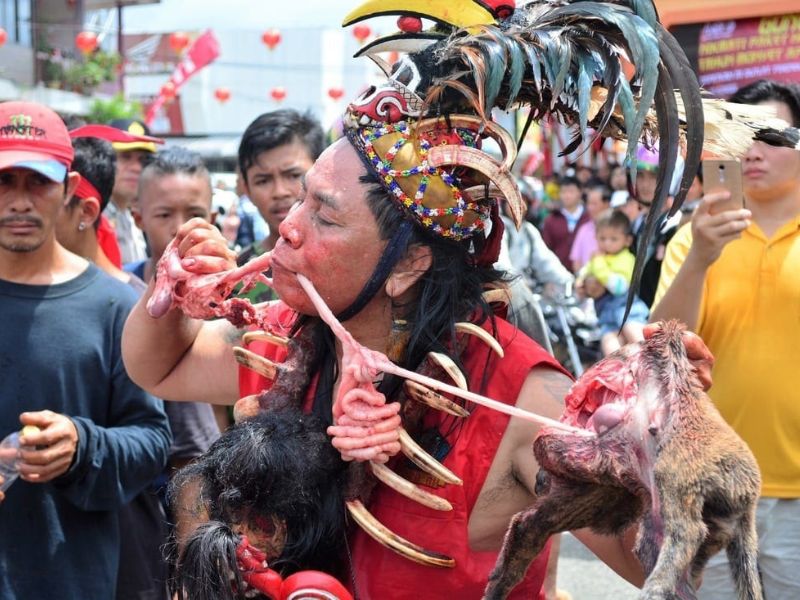
We spend a couple of hours inside the temple watching people possessed by spirits, each accompanied by a personal shaman, responsible for piercing and leading the Tatung during the day. It seems they don’t see anything in front of them, but they know where they are going. It’s impossible to cross their glance.
In the square in front of the temple, we see a lot of people, we approach, a Dayak who has just beheaded a puppy dog. They are eating it along with another Dayak, raw as it is. He does it right in front of the police. The government banned the dog-eating practice, and this is a clear protest against the constant interference of the Indonesian Muslim majority.
In the evening we go to visit various temples to understand if it is possible to assist at the moment of the piercing. We’ll visit four or five together with a Chinese friend from Singkawang, but all of them tell us that tomorrow they will not participate in the parade. They boycott.
Day 2 – religion or carnival?

We have tickets for the VIP grandstand, given to us by the family that is hosting us, they too are boycotting. We don’t get on the VIP platform, but we can get a better position on the road where the ceremonial parade takes place.
The Mayor’s speech seems to last forever, with tremendous interludes. One above all when they try to play gongs and drums with results nothing short of embarrassing. Then the national anthem, hand on heart.
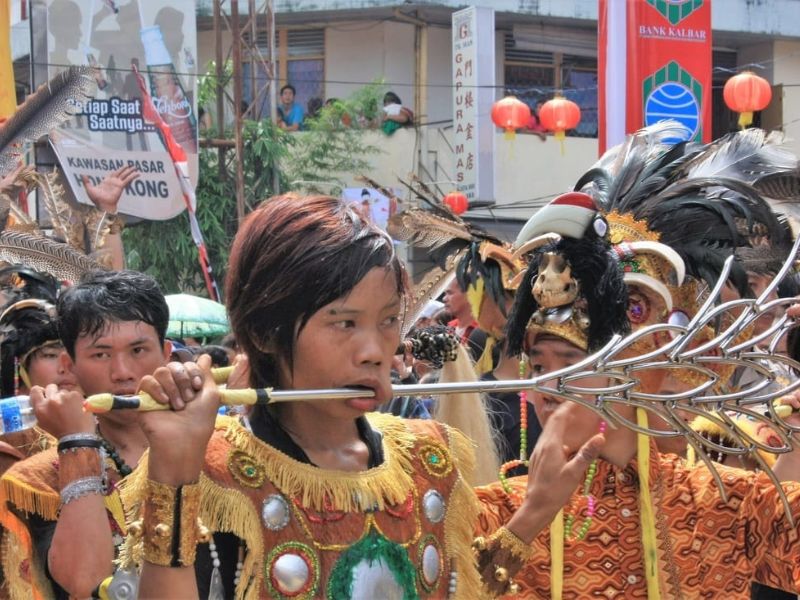
The parade begins, and it lasts about an hour. It’s sunny. We know that a guy died. The government did not want to pay all of the participants claiming they had not made the performance, despite the obvious holes in their cheeks. And, to make matters worse, the pay is not 1 million rupiahs but 900,000. 100,000 are taxes.
Despite all this, the Tatung are many, most come from outside, the boycott was not total, and the parade is impressive. But of the Tatung families of the city, not a trace, for them the rite has already been accomplished, the spirits Singkawang have eluded the trap.


